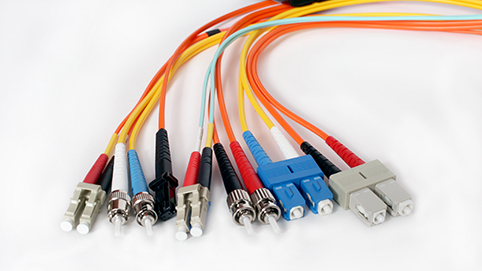Fibre: Selecting Between Multimode and Singlemode Cables
When it comes to transmitting data over long distances, fibre optic cables are an increasingly popular choice because they are able to provide fast, flexible connectivity. These cables have a core that serves as a “light guide,” allowing light (or data) to be transmitted from one end of the cable to the other.
There are two main types of fibre optic cables: singlemode and multimode. Understanding the differences between these two types of cables can help you choose the right one for your specific needs.
Multimode Cables
Multimode cables are designed to transmit multiple modes of light at the same time. These cables have a larger core diameter, usually between 50 and 100 µm, and are designed for shorter distances. They are often used in local area networks (LANs) and other short-distance applications.
Here are three common use cases for multimode cables:
- LANs: Multimode cables are often used in local area networks (LANs) because they are able to transmit data over short distances at high speeds.
- Campus environments: Multimode cables are well-suited for use in campus environments, where data needs to be transmitted between buildings or within a single building.
- Short distance telecommunications: If you need to transmit data over a short distance, such as between two rooms in a building, multimode cables may be a good choice.
Singlemode Cables
Singlemode cables are designed to transmit a single mode of light at a time. These cables have a small core diameter, usually between 8.3 and 10.5 µm, and are designed for long distances. They can transmit data at high speeds, making them a popular choice for telecommunications over long distances.
Here are three common use cases for
singlemode cables:
- Long distance telecommunications: If you need to transmit data over a long distance, such as between a local phone exchange and an end user, singlemode cables are the better choice. These cables can transmit data at high speeds over long distances and are designed specifically for this purpose.
- High-speed data transmission: If you need to transmit data at high speeds, singlemode cables are the better choice. These cables are designed for high-speed data transmission and are capable of transmitting data at high rates over long distances.
- WANs: Wide area networks (WANs) often require the transmission of data over long distances. Singlemode cables are well-suited for this purpose because they are able to transmit data at high speeds over long distances.
Conclusion
When choosing between singlemode and multimode cables, it’s important to consider the distance you need to transmit data, the data rate you require, and the wavelength of light that is being used. By understanding these differences, you can choose the right type of fibre optic cable for your specific needs.
In general, singlemode cables are the better choice for long distance telecommunications, while multimode cables are better suited for short distance applications such as local area networks (LANs). Ultimately, the right choice for you will depend on your specific needs and requirements.
